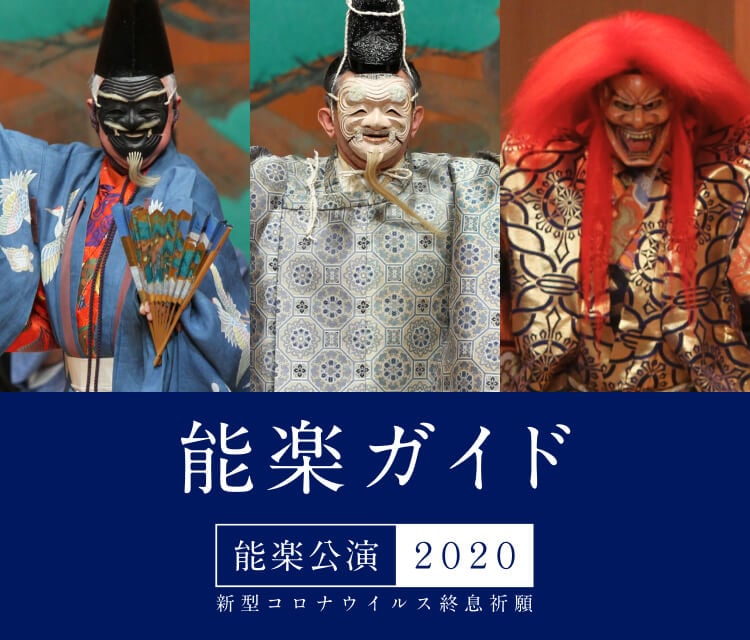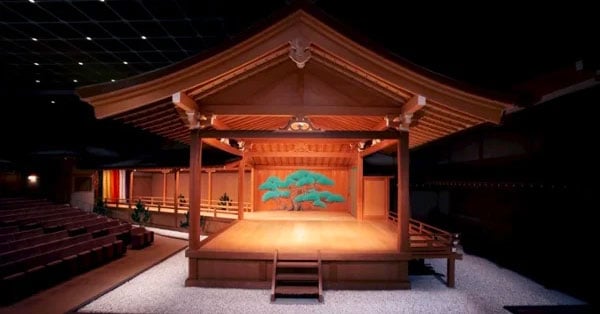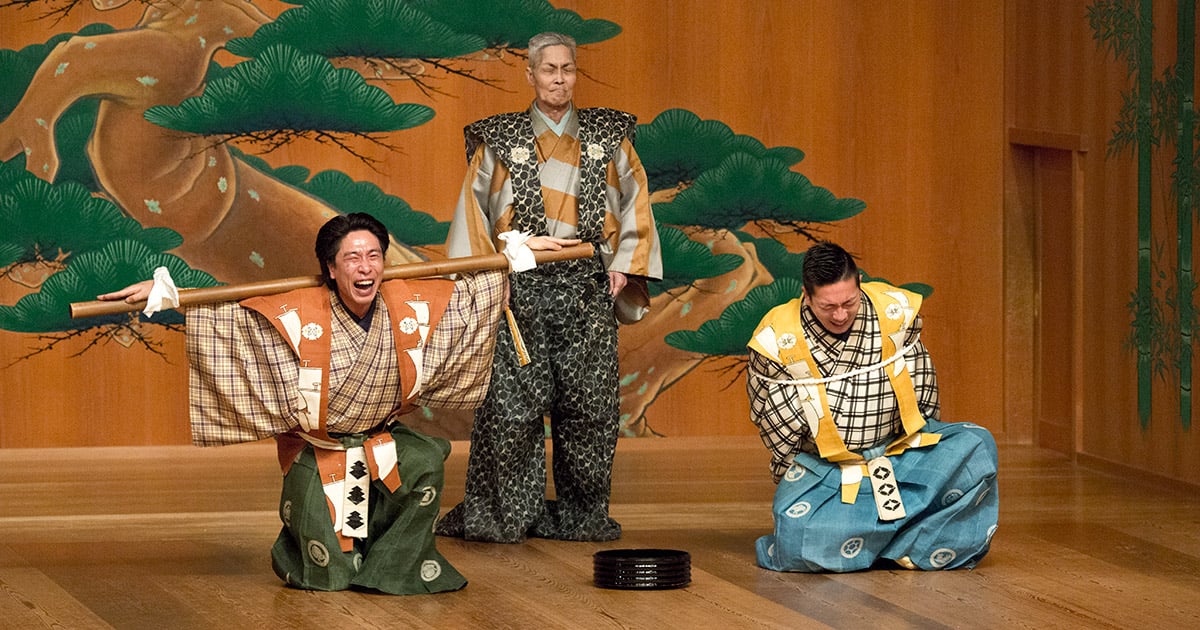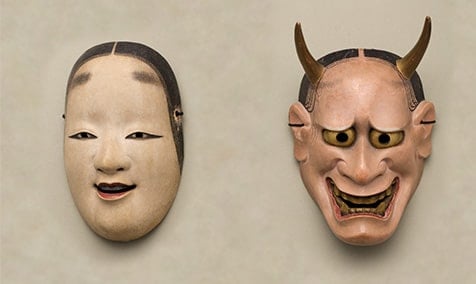Nō Costumes
As with the nō masks, gorgeous nō costumes have been passed down through generations as important elements of nō performance. Although there are no costumes remaining from Zeami’s time (1363-1443), it seems that clothing worn by the nobility and military elite was retailored into stage costumes. A prevalent system whereby aristocrats presented actors with garments as payment for a performance resulted in the nō actors attaining luxury garments made from fabrics imported from the Asian continent. For example, the oldest extant nō costume was presented to Zeami’s nephew, On’ami by the shogun Ashikaga Yoshimasa (1435-1490, r. 1449-1473). This happi jacket has gold dragonflies stitched into a delicate openwork fabric. It is still worn for special performances by the head of the Kanze school.
The majority of the old nō costumes date from the sixteenth century and tend to reflect the clothing aesthetic of the Momoyama period (1572-1603). During the Edo period (1603-1867), street clothing and stage costumes slowly grew apart. At this time, feudal lords sponsored nō actors so as to enjoy their performances and learn to perform themselves. Nō was also a means of diplomacy. Sponsorship spurred the various daimyo to amass costume and mask collections, thus stimulating the invention of ever finer textile techniques and the production of consistently elegant nō costumes. Considerable numbers have survived conflagrations, war bombings, and earthquakes, so that still today we can appreciate superlative costumes from the sixteenth century and later.
In nō, even characters of lowly poverty do not wear rags. Costumes for women’s roles include the karaori (photo 1), a kimono-style (kosode) woven with floral and courtly designs rendered in delicate beauty using threads of many colors and sometimes also gold or silver, and the nuihaku (photo 2), which is also a kosode but decorated with stenciled patterns in metallic foil enhanced by embroidery. A hairband (kazura obi)) binds down the wig. These are meticulously embroidered with cherry blossoms, autumn flowers, maple leaves, or triangles lined up to suggest fish scales.
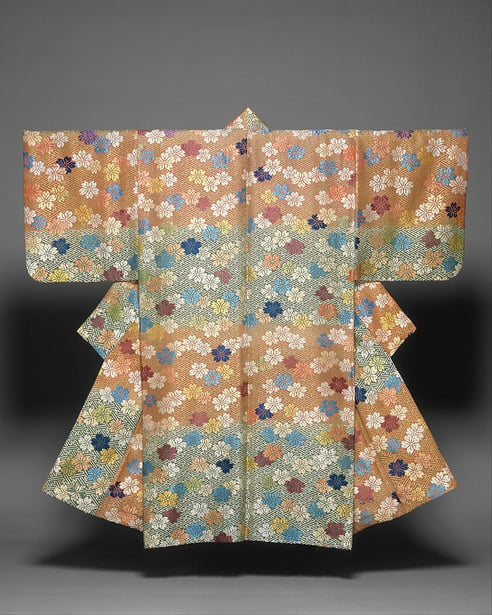
The Met (Rogers Fund, 1919).
紅緑段紗綾形桜花模様唐織
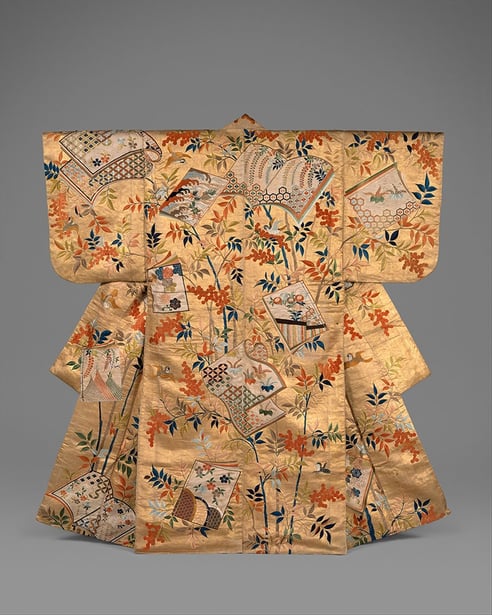
The Met (Gift of Mr. and Mrs. Paul T. Nomura, in memory of Mr. and Mrs. S. Morris Nomura, 1989) 胴箔地南天冊子模様縫箔
For dynamic roles of warrior ghosts and supernatural beings, the actor wears a special style of divided skirts called hangiri combined with broad-sleeved jackets (happi, kariginu, photo 4). These display a wide variety of bold designs, such as geometric patterns, lightning, or waves.
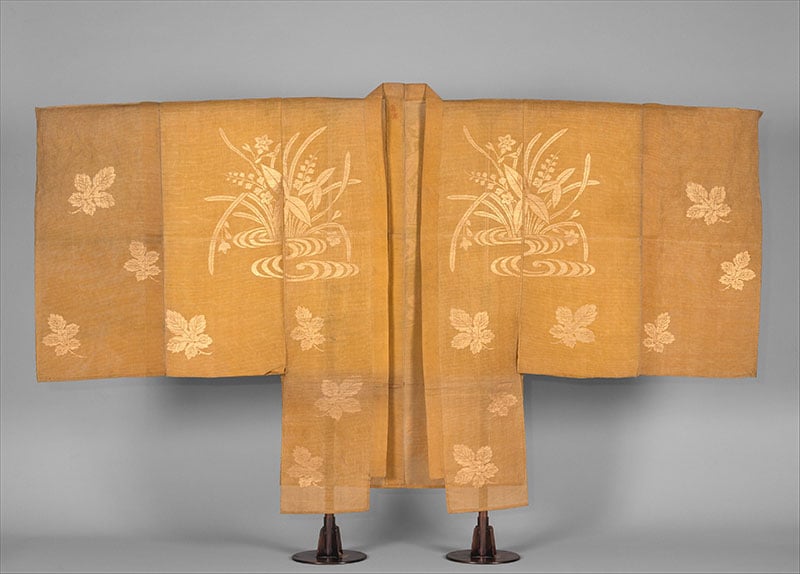
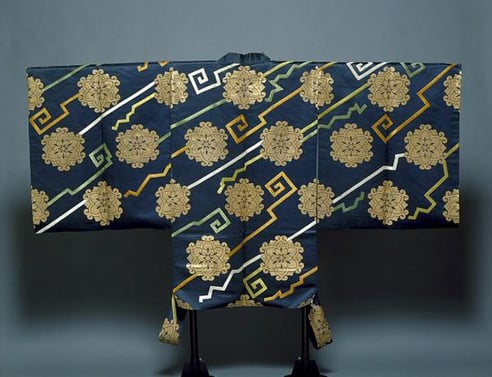
Rhode Island School of Design Museum (Lucy Truman Aldrich Collection).
Some twenty types of nō garments form the core wardrobe. They are combined and draped variously to create set outfits for each character. For instance, a village woman wears a karaori draped straight down in kinagashi style (photo 5), while a woman distraught from love slips off the right sleeve of the karaori in nugisage style, but a woman who dances generally wears in addition broad divided skirts (ōkuchi) and a flowing jacket (chōken; photos 3 and 6). Red is included in the costumes for young women, and is absent for older women’s costumes. Warrior-courtiers of the Heike clan can wear the same combination of ōkuchi and chōken, but different draping creates a totally distinct figure. The warrior has the chōken bound at the waist and slips off the right sleeve of the chōken so he can wield his sword. A travelling monk wears a kosode in kinagashi style combined with a mizugoromo (photo 7) travelling jacket. Courtiers wear broad-sleeved, round-collar robes (kariginu or nōshi) combined with ankle-bound pantaloons (sashinuki).
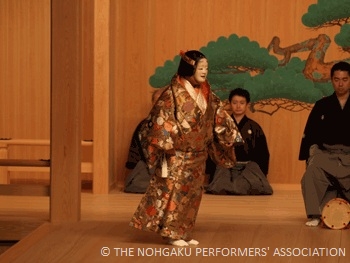
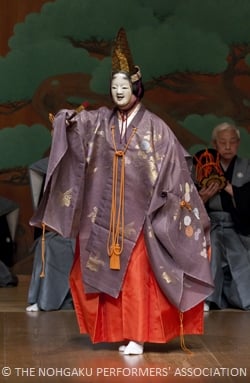
Nohgaku Performer’s Association.
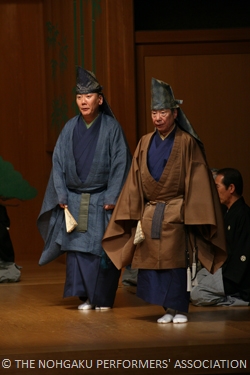
Nohgaku Performer’s Association.
The style of draping garments evolved over time. Judging from Zeami’s writings and old paintings, the draping was looser in the past. Over the centuries, draping changed with the styles of the periods and various inventions of the actors, so that today clear, straight lines create beautiful sculptural figures.
Items other than clothing, like wigs and fans, are also important elements of costuming. Wigs frame the mask intensifying its reality. For human figures, like old men and women, the wigs reflect classic hairstyles: long hair bound at the nape of the neck for women and in a ponytail that is flipped forward or old men. Ghosts of warrior courtiers as well as female and male deities wear loose, black hair (kurotare), while aged deities and plant spirits where loose white hair (shirotare). Demons and supernatural beasts sport long shaggy wigs (kashira) of red or white hair that half hides their mask and cascades down their backs. Every performer including the musicians and stage assistants carry a fan. The actors use beautifully painted fans with spread tips. The fans accentuate the dance and serve as mimetic tools to suggest pouring sake or playing a musical instrument.
The actor performing the shite role thinks about the costumes and masks to be used in a performance. Of course, the choice is made within established rules. The choice of designs and colors affects the impression made by the protagonist. Also, the beautiful landscapes, floral designs, and bold geometric patterns light up the unadorned nō stage, deepening the sense of the season and the character, and inspiring a deeper imaginative response in the audience.

